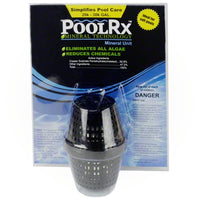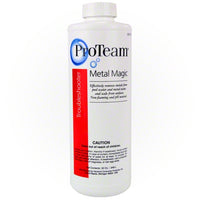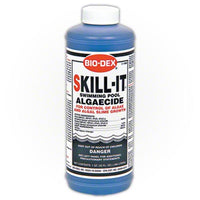Pool Startup Chemicals Guide

When you fill up your new pool for the first time -- or when you open your pool after winter -- there are some specific steps to take to get the water ready for use. Use this list of the pool chemicals needed for startup to make sure you have everything you need when you get started.
Startup Chemicals to Open Your Pool
Your first step when opening your pool is to test your water, because the results of your water tests will determine what pool startup chemicals you need to use. It's best to test your pool's water in several spots a couple of feet below the surface of the water. This way, you can average out your results to take into account any variations in your readings.
The amount of each chemical you need will vary based on the size of your pool and the results of your water tests. Most pools will need startup chemicals to adjust pH and hardness, sanitize the water, and prevent algae growth.
Optional Anti-scaling Product
If you're filling your pool with fresh water, this is a good time to add an anti-stain or anti-scaling product. These protect your pool's surface from stains and limescale, and will help keep the pool looking good, as well as reduce maintenance requirements.
Adjust the pH
The first step when treating your pool's water is to adjust the pH. This is important because pool chemicals are formulated to work at specific pH levels. If the pH isn't where it needs to be, any other chemicals you add won't give the right results.
Adjust the pH to between 7.4 and 7.6 before proceeding to the next steps. If the pH is higher than 7.6, use muriatic acid or a granular acid to reduce it. If the pH is lower than 7.4, an alkaline product, such as granular soda ash (sodium carbonate), increases it.
It's also important to retest the pH after adding each additional chemical.
Adjust Total Alkalinity
Alkalinity measures the concentration of free alkaline substances in the water, and generally should be between 80 and 120 ppm. When alkalinity is outside this range, it's difficult to control the pH of the water. To raise alkalinity add sodium bicarbonate to the water; to reduce it, add muriatic acid or granular acid.
Sanitize the Water
Once the pH is right, the next step is to "shock" the pool, which means adding a large amount of chlorine to act as a sanitizer. Chlorine is added in the form of calcium hypochlorite, which is dissolved in water and then poured into the water. The aim here is to achieve a chlorine level of 3.0 ppm. An optional step is to add cyanuric acid at a level of around 40 ppm to stabilize the chlorine.
Once chlorine has been added, leave the pool overnight. Retest the pH and hardness the next day, adjusting if necessary.
Adjust Hardness
Water hardness refers to the calcium content of the water. When calcium is present in high levels, it can cause scaling of the pool's surface over time. Adding an anti-scaling product is helpful, but because water can also be too soft, it's important to test for hardness and adjust it when necessary.
For soft water, use calcium chloride to increase hardness. Pool chemicals that reduce hardness include sodium bisulphate and muriatic acid.
Add Algaecide
The last step is to add an algaecide. Don't wait until you actually have an algae problem to carry out this step; in this case, prevention is definitely better than the cure. Choose a low-foaming algaecide, as these are less likely to influence your pool's chlorine requirements.
Maintaining the Water
Each of these pool setup chemicals must be used on a regular basis to keep the water and the pool in good condition. With regular testing and treating of the water, it'll be in great shape all season long.







Comments
Leave a Comment